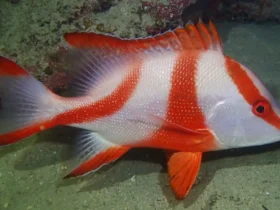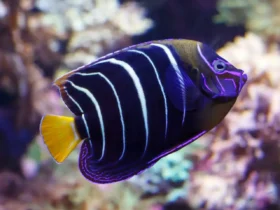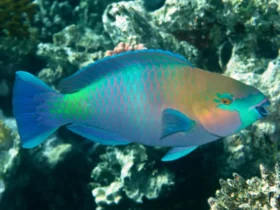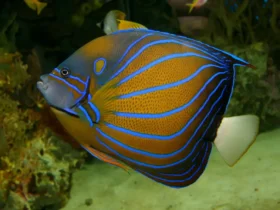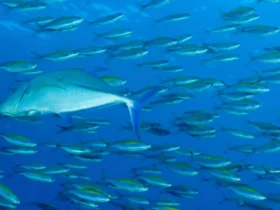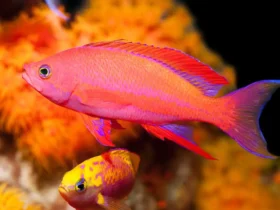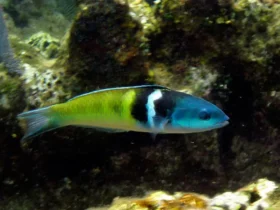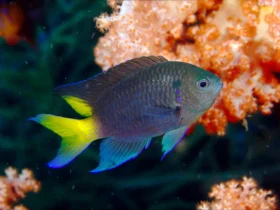In the mesmerizing world of coral reefs, a shimmering blue jewel flits among the corals—the Blue Damselfish (Chrysiptera spp.). With its striking electric blue coloration and lively behavior, this small fish adds a vibrant touch to the underwater tapestry. Join us as we dive into the captivating world of the Blue Damselfish, exploring its appearance, behavior, and ecological significance in coral reef ecosystems.
Blue Damselfish images
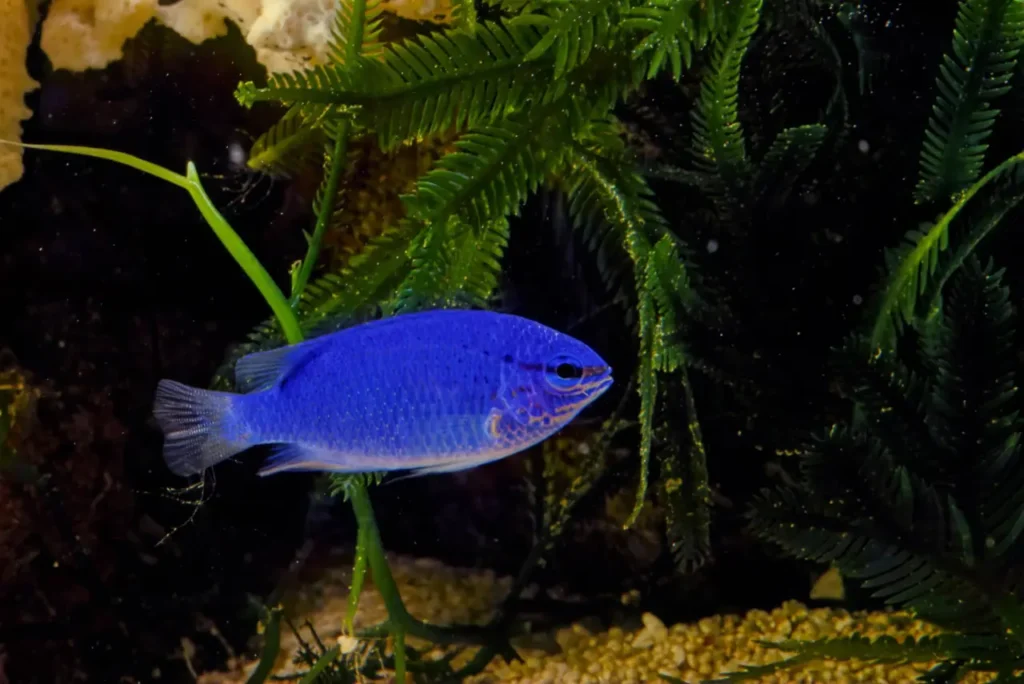
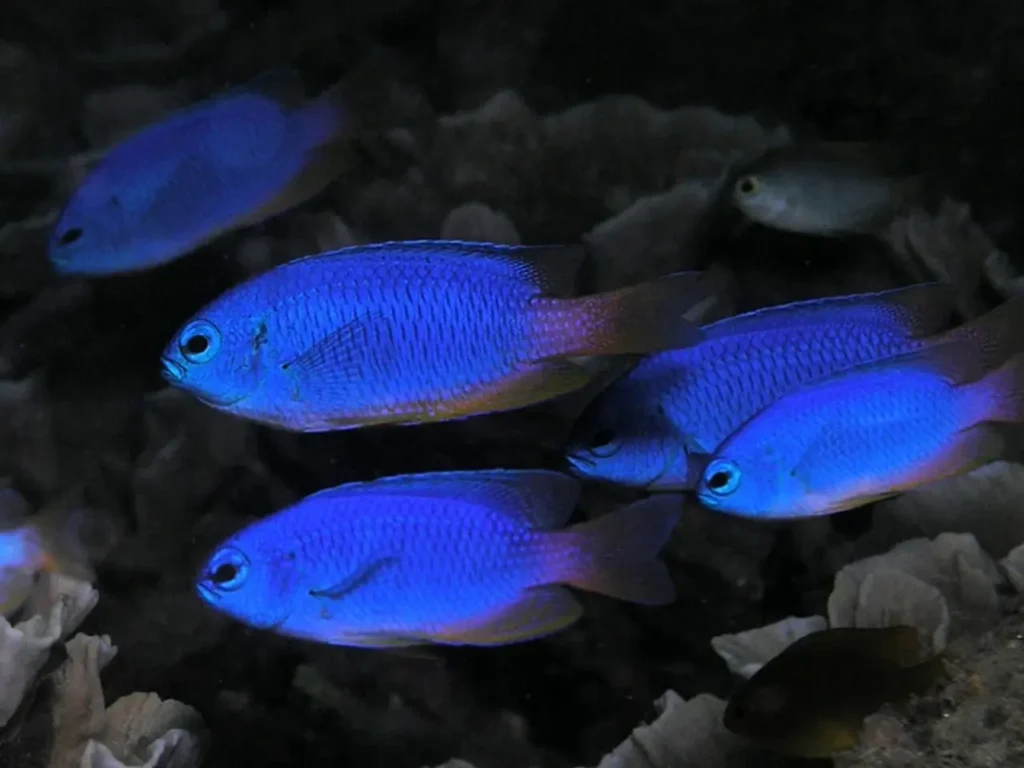
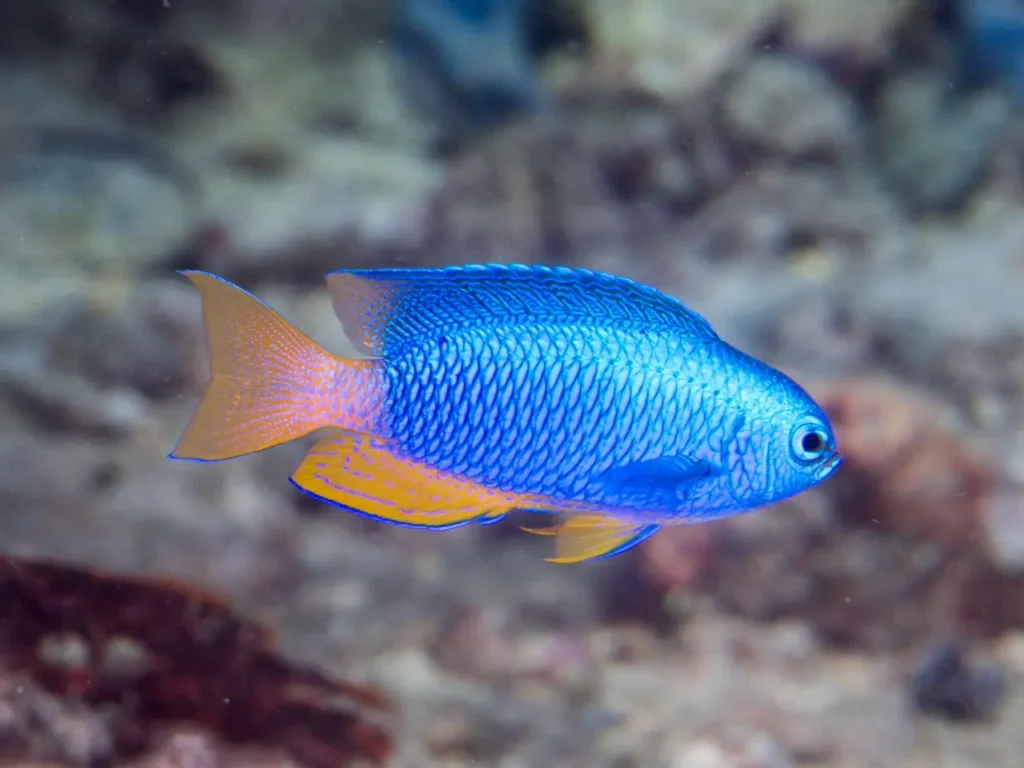
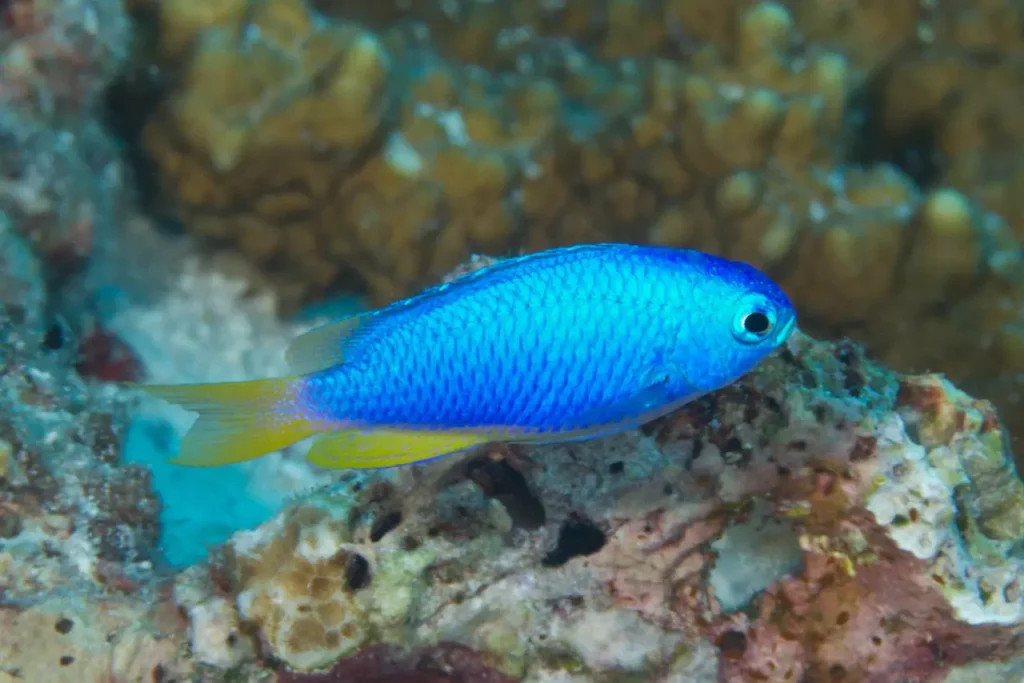
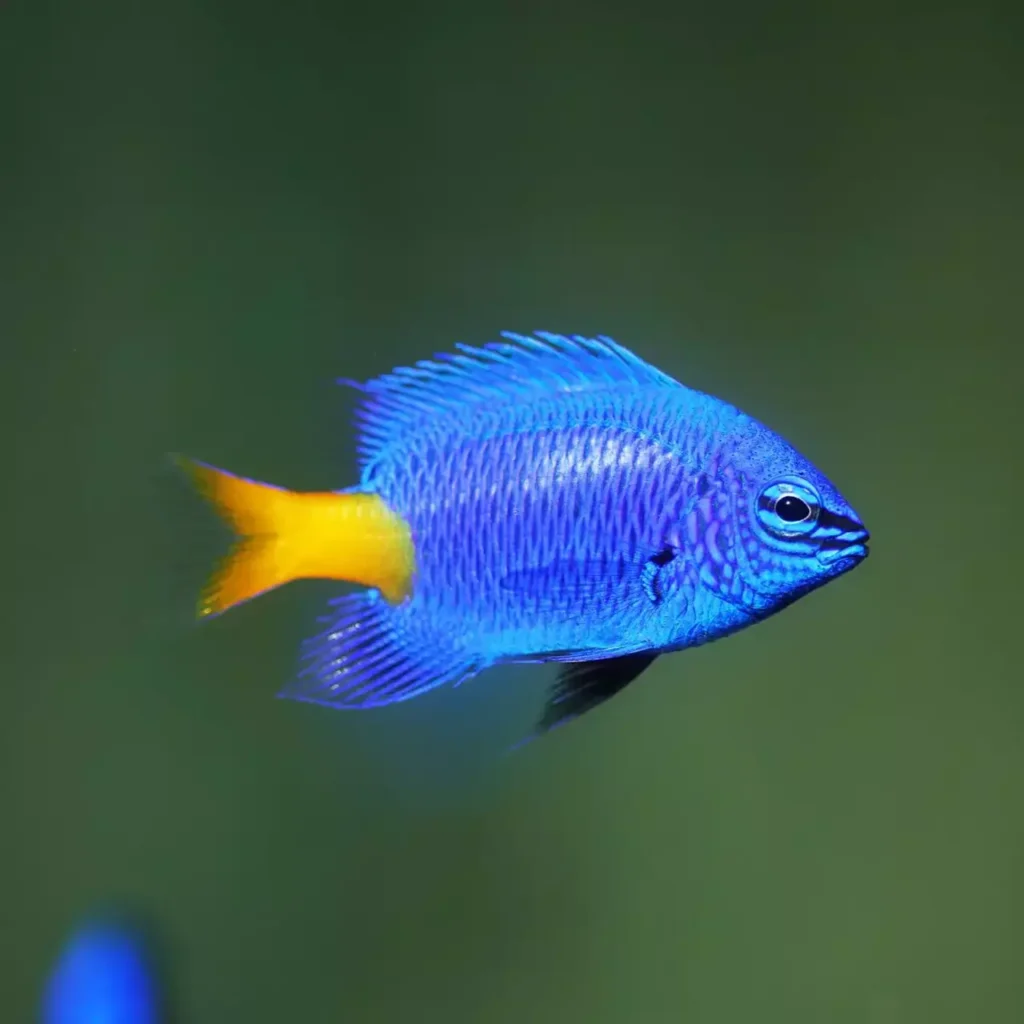
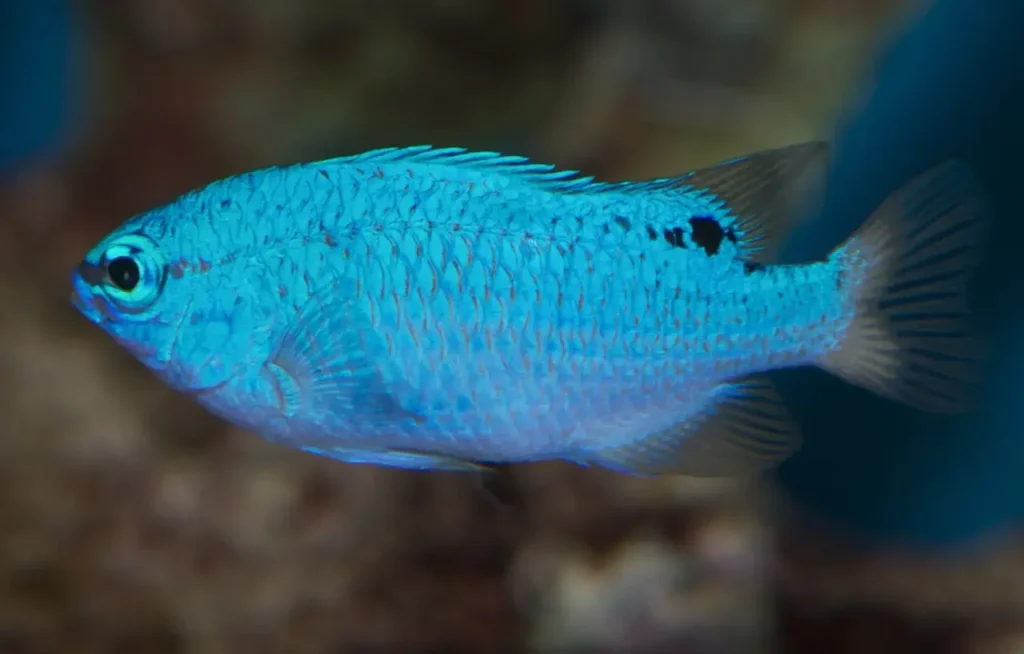
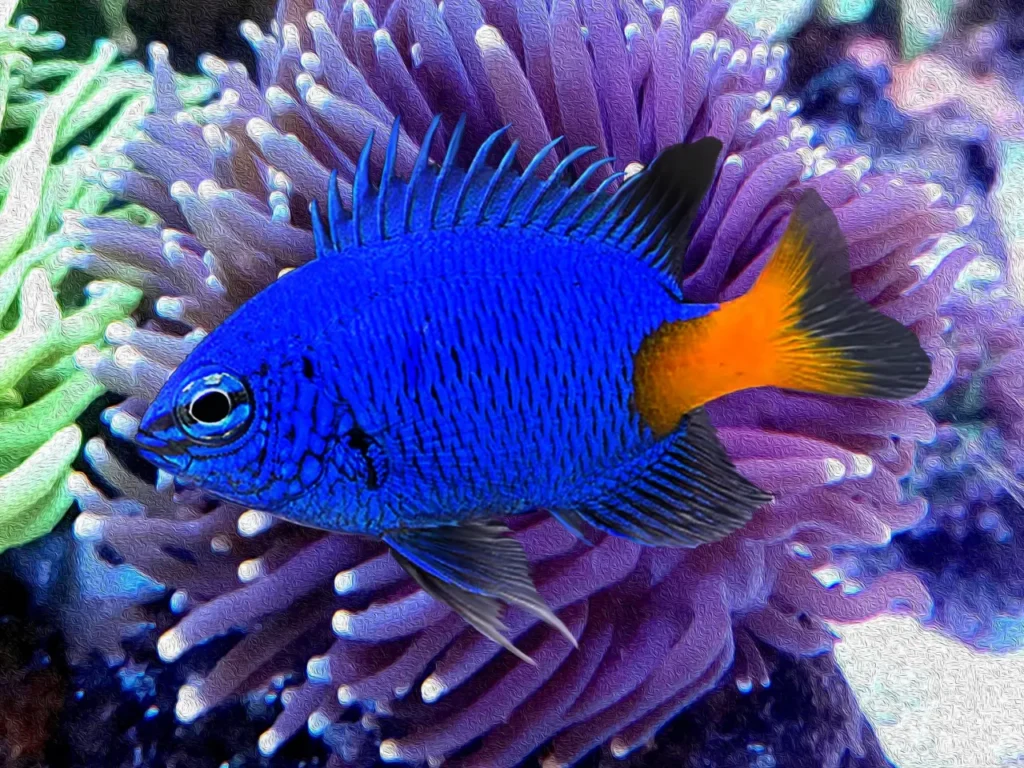
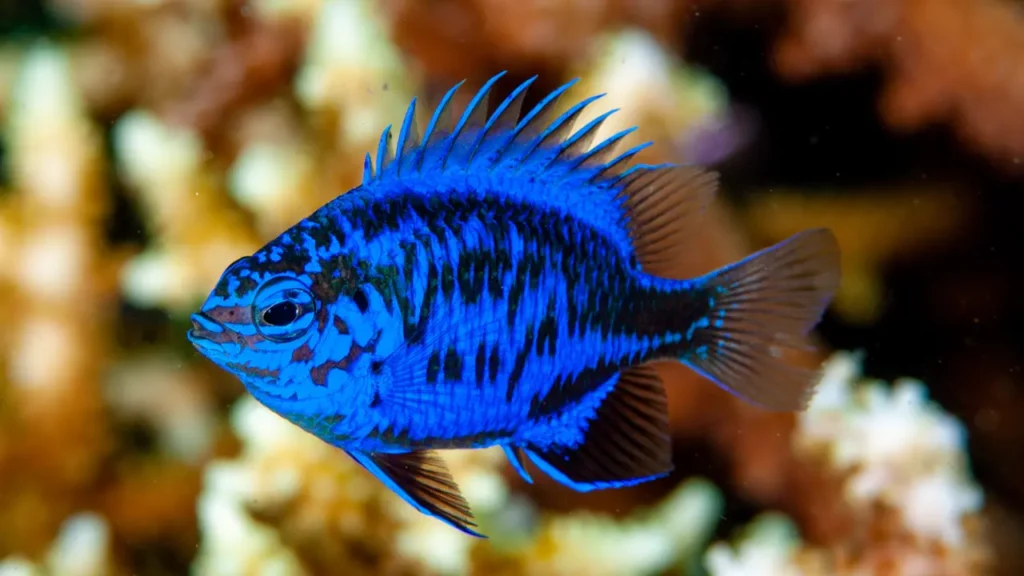
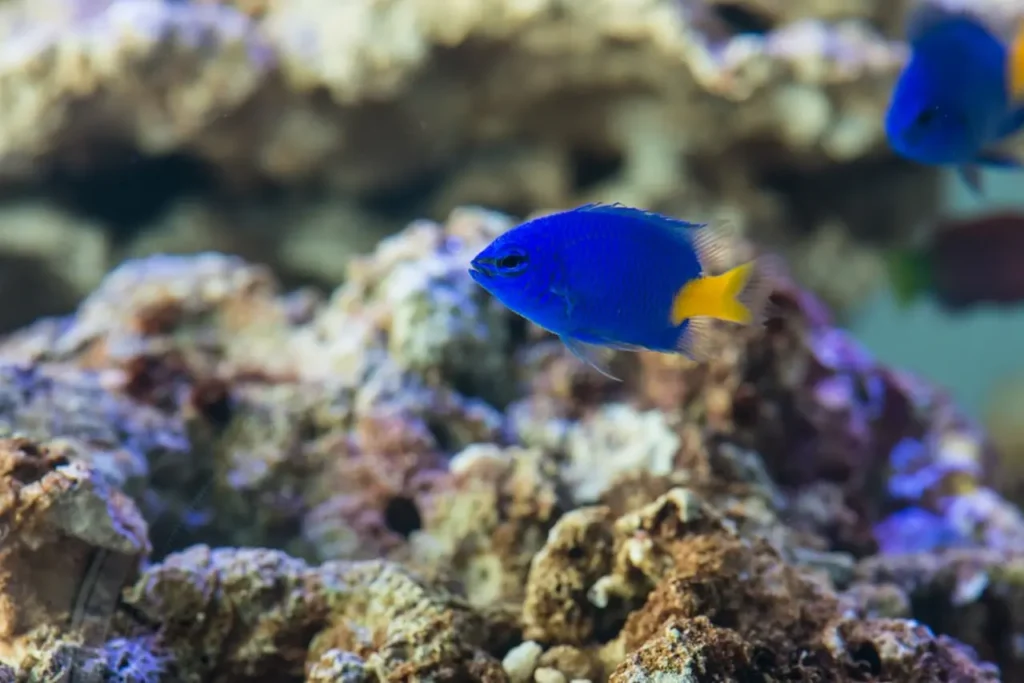
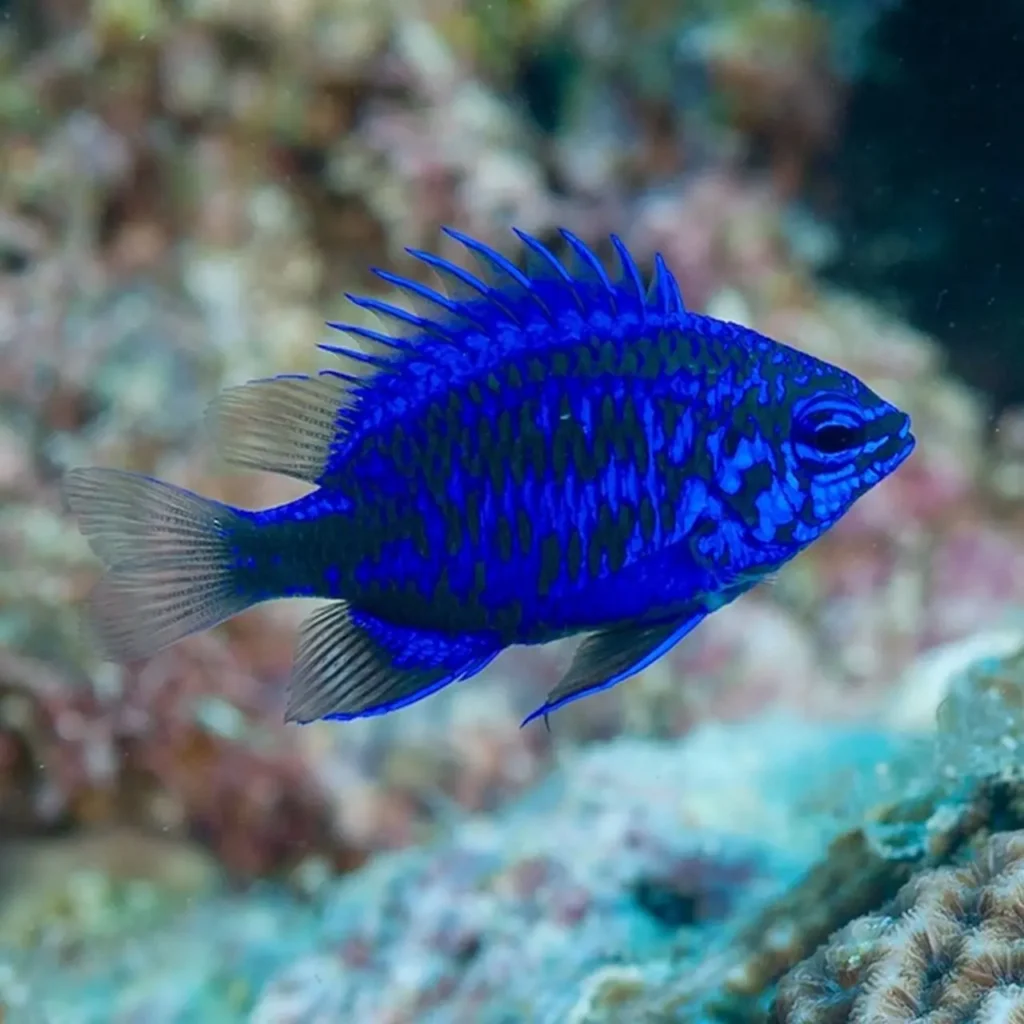
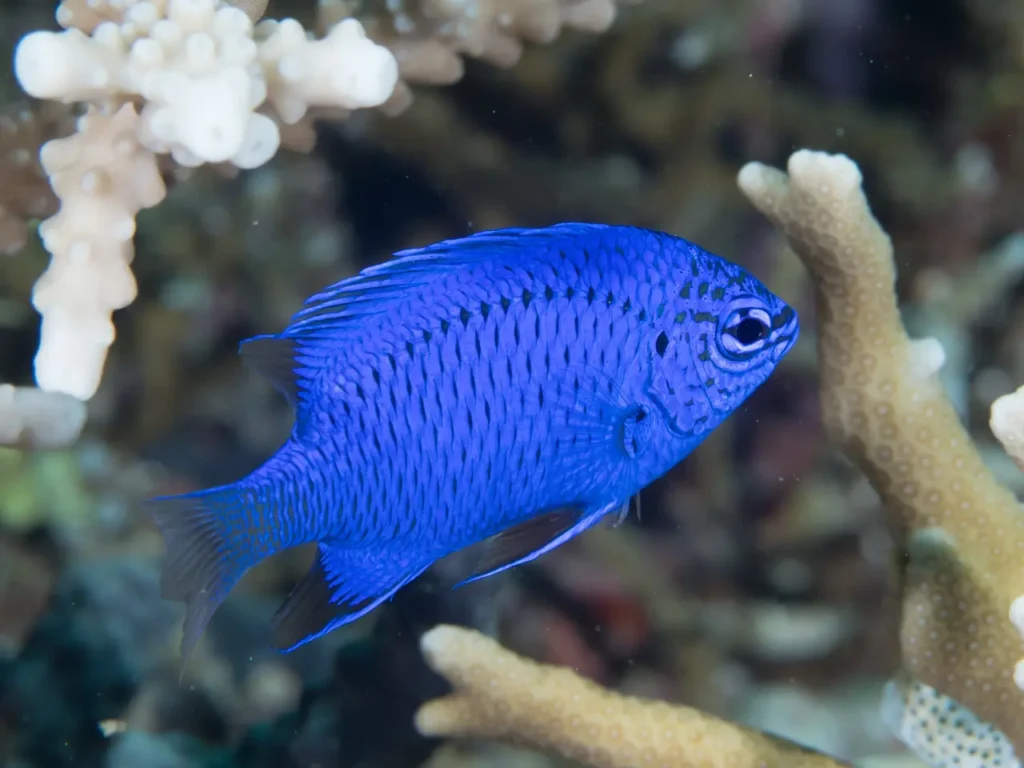
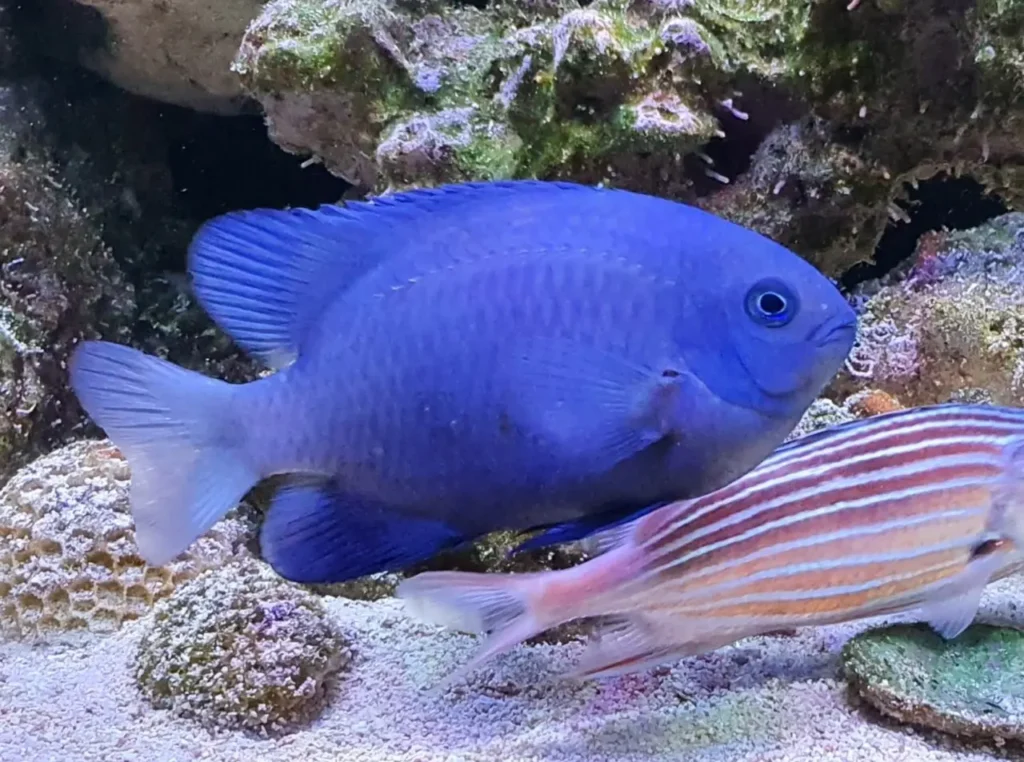
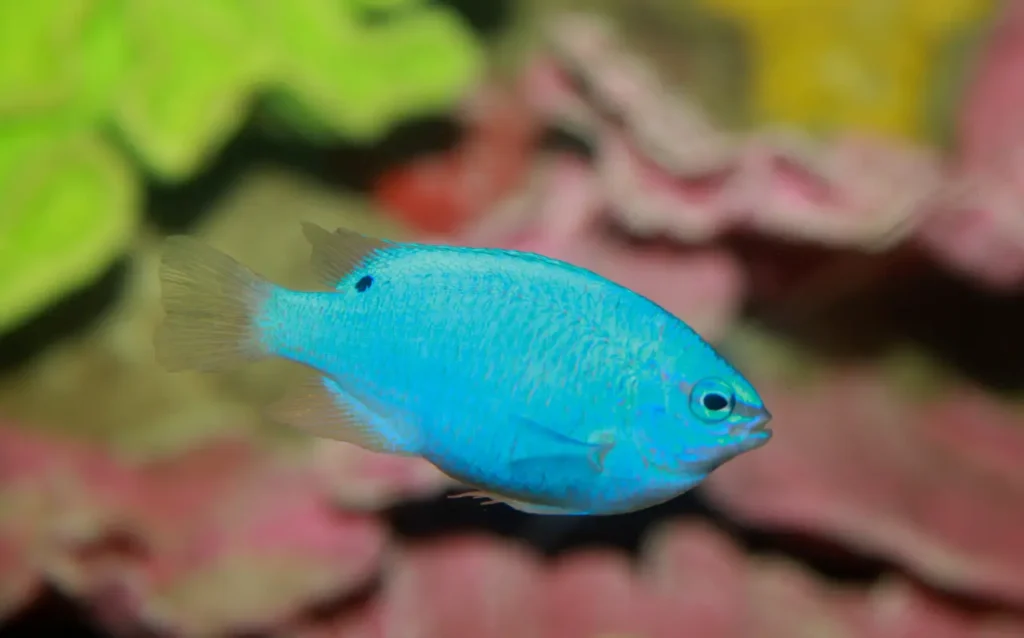
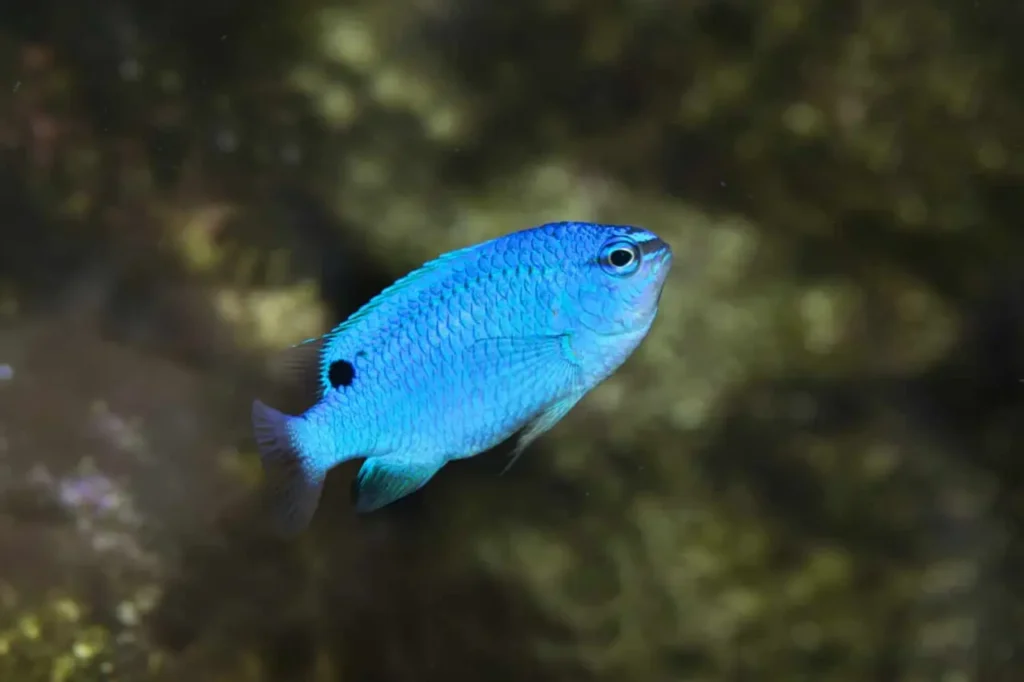
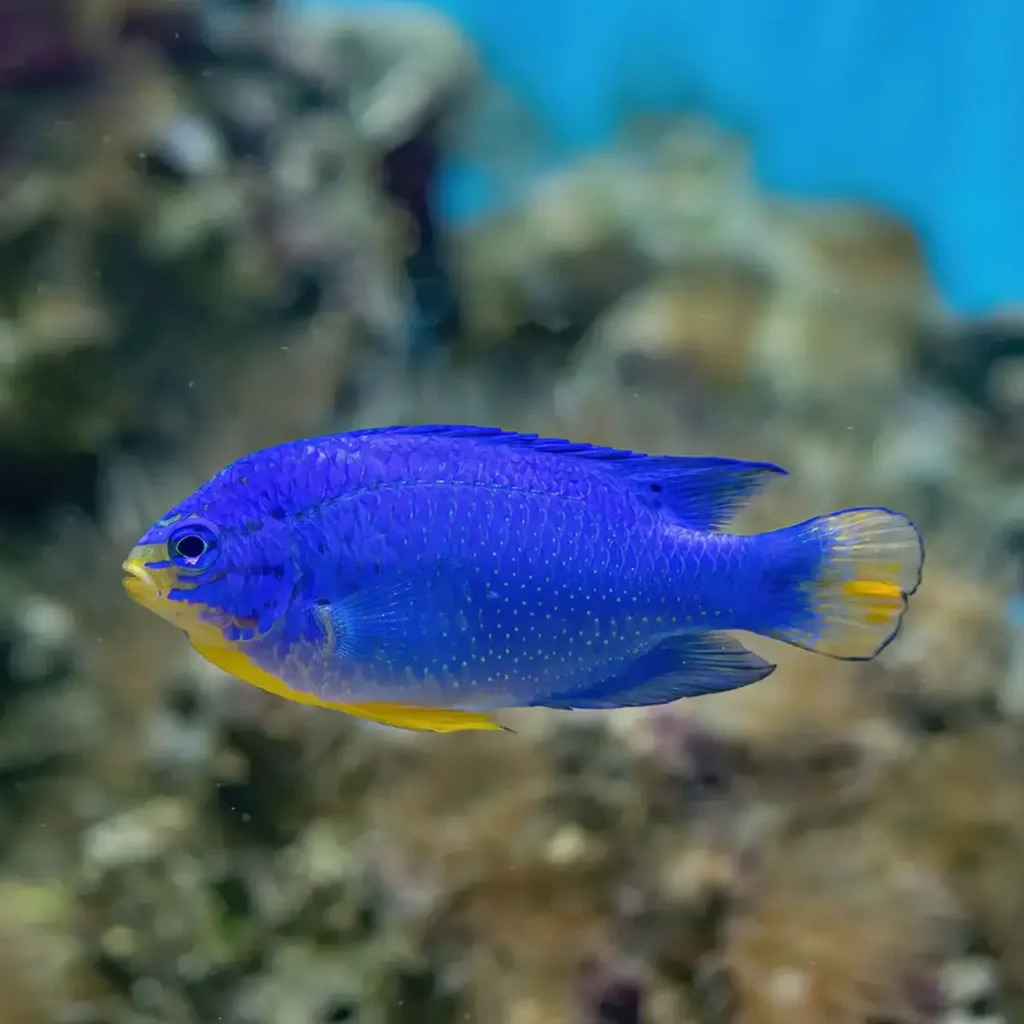
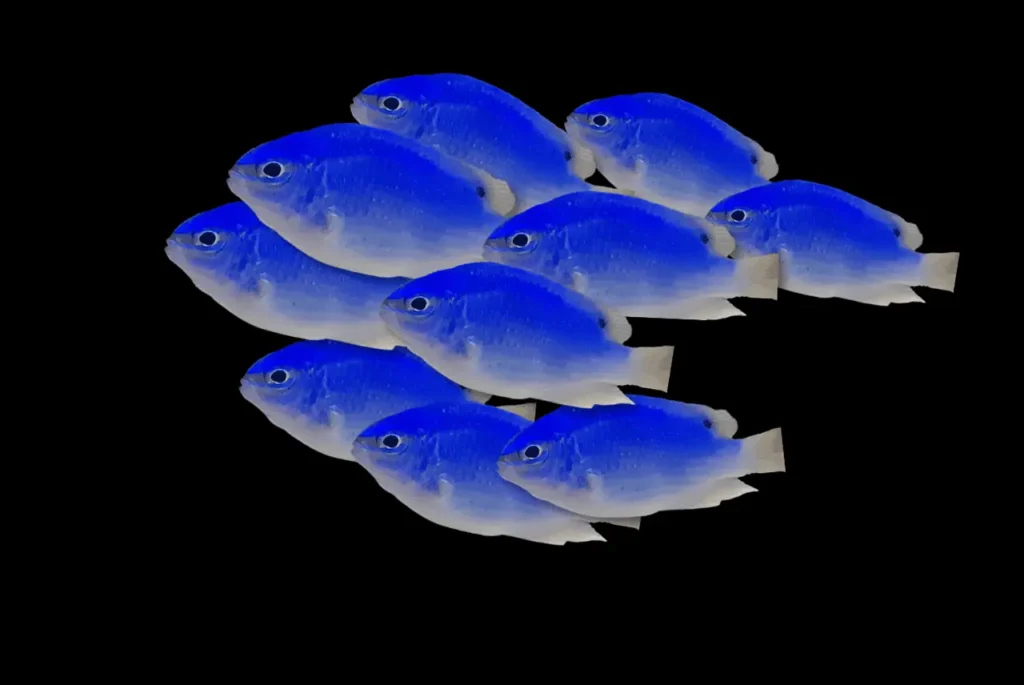
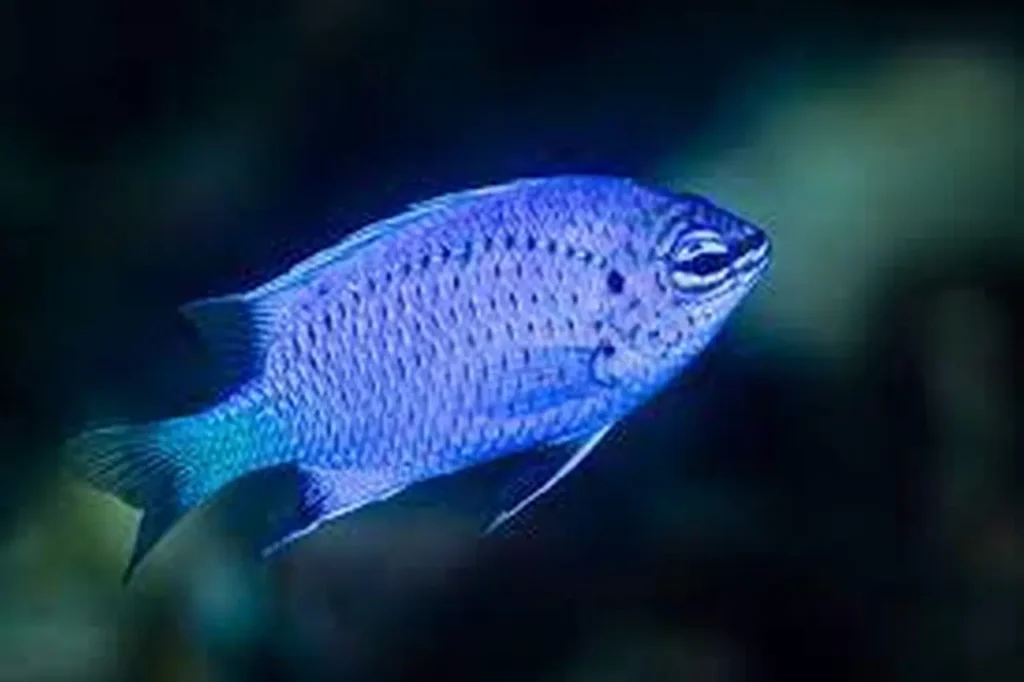
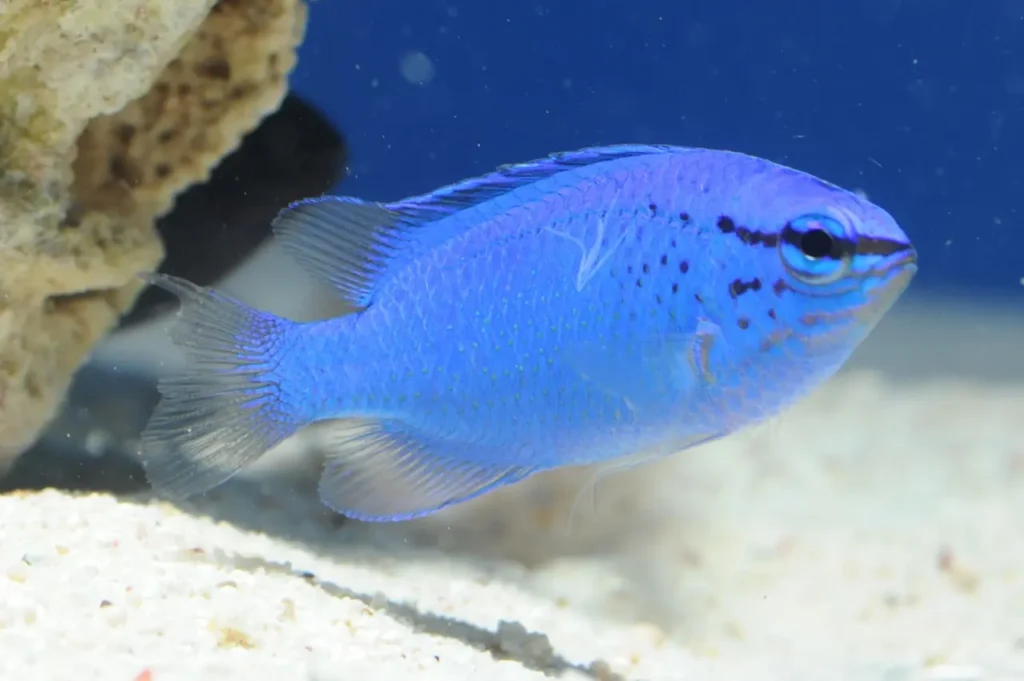
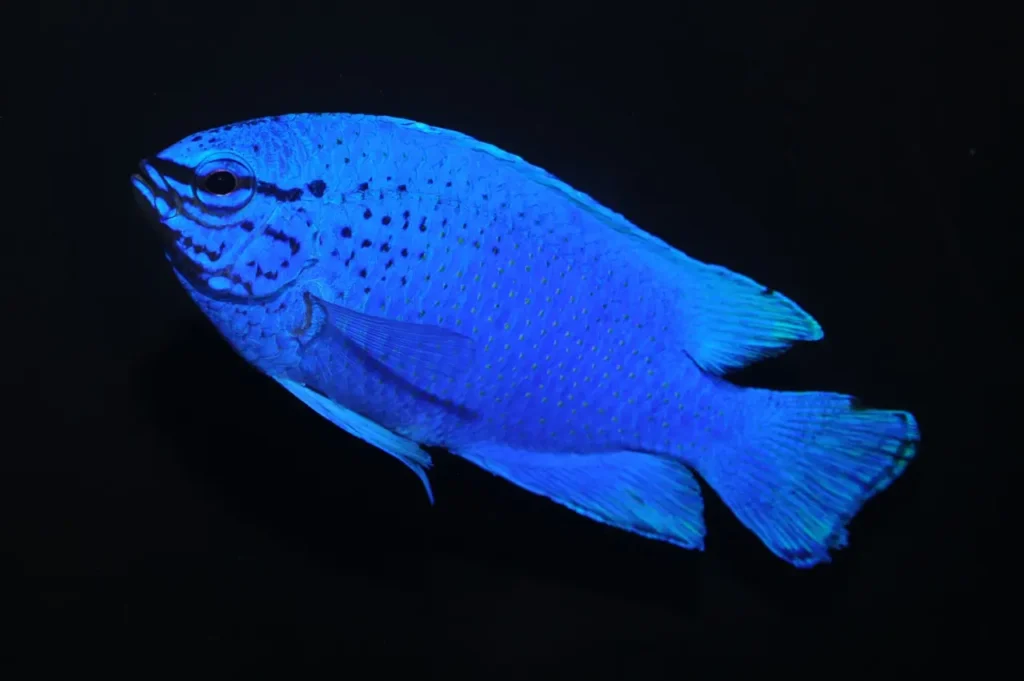
Appearance and Distribution
The Blue Damselfish belongs to the family Pomacentridae and encompasses various species, including the popular Blue Damselfish (Chrysiptera cyanea) and Azure Damselfish (Chrysiptera hemicyanea). These fish typically measure around 3-4 inches in length and showcase a vibrant blue coloration that is characteristic of the species.
Found in warm tropical waters, Blue Damselfish inhabit coral reefs in the Indo-Pacific region, including the Red Sea, Indian Ocean, and the Pacific Ocean. They are commonly sighted in shallow reef areas, often near branching corals or other structures where they can find shelter and establish territories.
Behavior and Social Structure
Blue Damselfish are known for their territorial and aggressive behavior, particularly when defending their chosen patch of reef. Males often engage in displays to establish and protect their territories, showcasing their vibrant colors and darting movements. They defend their space against rival males and other intruders, even larger fish, by nipping and chasing them away.
These fish form social groups within their territories, comprising a dominant breeding pair and subordinate individuals. The breeding pair is responsible for maintaining and defending the territory, while the subordinates assist in territorial defense and help raise the offspring.
Feeding Habits
Blue Damselfish are omnivorous, feeding on a varied diet consisting of small invertebrates, plankton, algae, and coral polyps. They are known to nip at coral polyps, but their impact is usually minimal compared to larger coral predators. While they may occasionally graze on coral, they also contribute to the reef ecosystem by consuming algae and small organisms that can harm coral health if left unchecked.
Ecological Significance
Despite their small size, Blue Damselfish play a significant role in coral reef ecosystems. As herbivores and small predators, they contribute to the balance of the reef by regulating algal growth and controlling populations of small invertebrates. Additionally, their activity and movement within the reef help to aerate the water and facilitate nutrient cycling.
Conservation and Threats
The Blue Damselfish is not currently considered a threatened species. However, like many reef inhabitants, they are vulnerable to various human-induced threats. Destructive fishing practices, pollution, and habitat degradation, including coral bleaching events, pose significant challenges to the health and survival of these fish and their coral reef habitats. Responsible reef management, sustainable fishing practices, and the establishment of marine protected areas are vital for their conservation.
Appreciating Nature’s Blue Gem
The Blue Damselfish enchants us with its radiant blue coloration and animated behavior as it darts among the corals. Its presence in the coral reef reminds us of the intricate interconnections and diverse beauty found within marine ecosystems.
By fostering awareness, supporting conservation efforts, and engaging in sustainable practices, we can protect the delicate balance of coral reef ecosystems and ensure the continued existence of this vibrant jewel—the Blue Damselfish—for future generations to marvel at and cherish.
